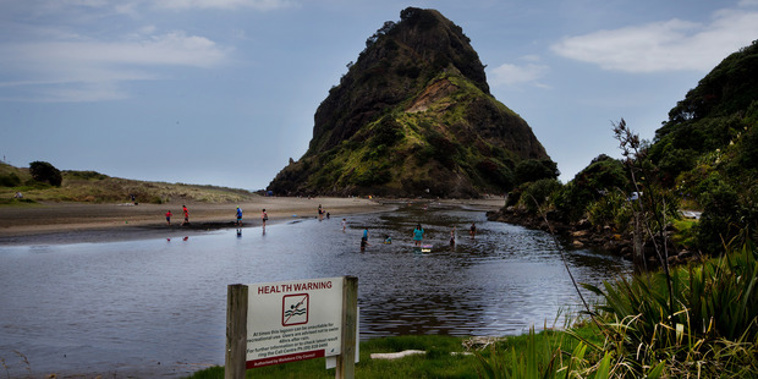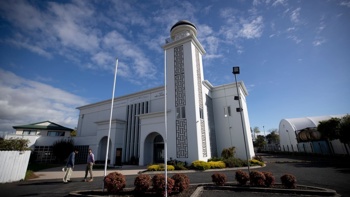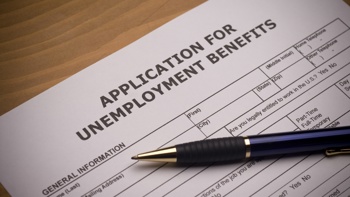
Swimming has been banned at 10 Auckland beaches this summer because of worsening pollution from human and animal wastes.
Permanent signs declaring that the water is not safe for swimming went up at the start of summer at Laingholm and Wood Bay near Titirangi, the north and south lagoons at Piha, and at the Bethells Beach lagoon - all popular swimming spots for children too young to swim in the wild west coast surf.
Auckland Council has now stopped routine monitoring of water quality at all five sites, as well as at five other beaches that already had permanent warning signs - Cox's Bay, Meola Reef, Weymouth, the Wairau Stream outlet at Milford Beach and Little Oneroa lagoon on Waiheke Island.
It has also issued temporary health warnings so far this summer at seven of the other 72 beaches that are still monitored.
The worst faecal bacteria count, measured at Green Bay on November 16, was 24,200 enterococci in every 100ml of water - 173 times the maximum safe level of 140.
Wastewater biologist Gemma Tolich Allen, the Manukau Harbour Restoration Society's scientific adviser, said overflowing septic tanks and wet-weather "bypass" spills from the Mangere sewage treatment plant had been polluting the Manukau for decades.
She called for the issue to be addressed urgently.
"I think this harbour is a national jewel," she said.
"It's the second-biggest harbour in the country. It's just been slowly killed."
The new water quality data comes the day after the Weekend Herald reported that raw sewage is being flushed into the Waitemata Harbour every time the city gets more than 5mm of rain.
The worst overflows in Sandringham spill more than 100 times a year "in the order of 1 million cubic metres" a year, equivalent to three days of throughput at the Mangere treatment plant.
The data shows bacterial counts have exceeded the safe maximum in four weeks out of 10 so far this summer at Green Bay, and in two weeks out of 10 at Judges Bay (Parnell), Mellons Bay (Howick), Christmas Beach (Herald Island), Armour Bay and Foster Bay near Huia, and at Clarks Beach at the south end of the Manukau Harbour.
Of these, only Judges Bay is in the area served by the old combined stormwater/sewer system where rainwater flushes sewage into the sea.
The causes of pollution at the other beaches are unclear. The council told the Herald on Sunday that the sources of faecal contamination were "being characterised" or "will be characterised in 2017" at Laingholm, Wood Bay, Green Bay, Christmas Beach and Foster Bay.
Paul Walbran, a Laingholm resident for 40 years and chair of Watercare's environmental advisory group, said he was not aware that Laingholm and Wood Bay were now regarded as permanently unsafe and he was "puzzled" by what was behind it.
He said the urban sewerage network was extended to Laingholm in the 1980s and he was not aware that it had ever overflowed in the area.
Green Bay Ratepayers and Residents Association head David Kenkel, who has swum at Green Bay all his life, said dogs might be the chief culprits.
"People walk their dogs here a lot," he said. "I've been informed that quite often after we've had a dry spell and there is a wash of rain you get a lot of dog poo washed in."
Further west at Armour Bay, Foster Bay, Piha and Bethells there is no sewerage network and the main cause of pollution is overflowing septic tanks.
Waitakere Ranges Local Board chair Greg Presland said the board set up a $50,000 fund two years ago to give residents $5000 each to upgrade their septic tanks, but all the money had now been spent.
"We have only just been advised that it's been fully subscribed. We'll talk about it in the next week or two," he said.
Council Healthy Waters general manager Craig McIlroy said the council had also widened the scope of its Retrofit Your Home scheme, originally set up for insulation, to lend residents up to $35,000 to upgrade septic tanks.
Tolich Allen said she first worked with the old Waitakere City Council to fund septic tank upgrades 20 years ago and the problem had only got worse since then.
She said Watercare data showed that the Mangere treatment plant reached capacity and some wastewater and stormwater had to "bypass" full treatment after heavy rain on average 20 to 22 times a year since the plant was upgraded in 2003.
On June 29-30 last year, she said "around 124 Olympic-sized swimming pools of partially treated waste was discharged into the Manukau" just across the harbour from the beaches at Laingholm, Wood Bay and Green Bay.
Take your Radio, Podcasts and Music with you









